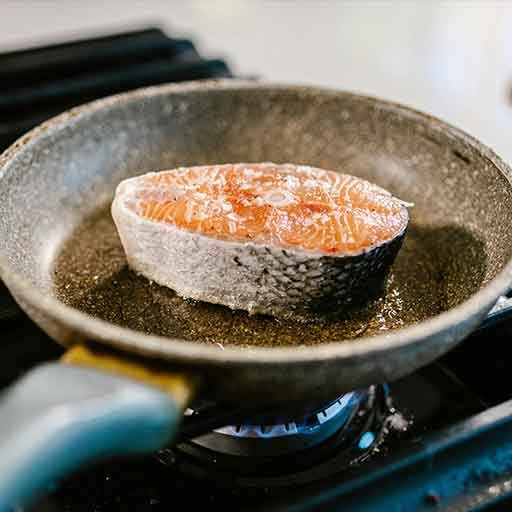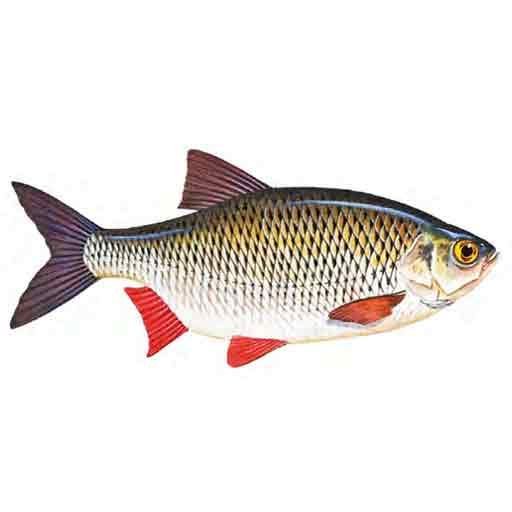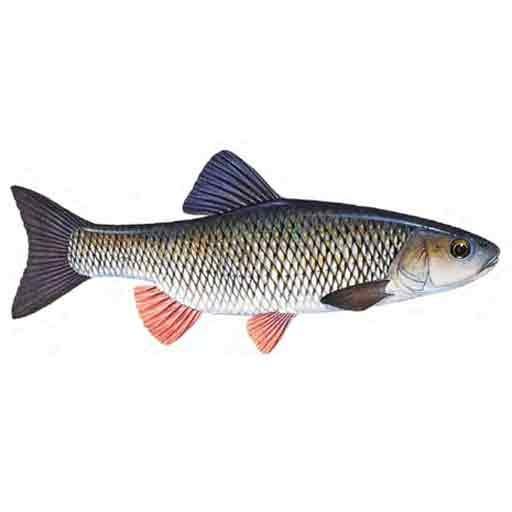Lake trout can be up to 1.5m (5ft) in length, apparently Spinytails, and most other trout, do not have dark spots Species They are commonly found in lakes and rivers and are Fast swimmers, aggressive predators, eat all kinds of food—organisms ranging from plankton to small mammals. Adults are lake trout. They are known to eat small lake trout. When they arrive, they give birth. Five to six years of age. Females lay their eggs on top. Rocky bottom of lakes. This enables the eggs to lie in the crevices. Fly fishing and spinning are the favorite fisheries on the bottom. methods, but many anglers prefer to troll behind boats.
Lake Trout
Scientific Name: Salvelinus namaycush
Lake trout, also known as Mackinaw trout, is a highly prized freshwater fish because of its culinary value. Its mild, slightly sweet flavor and firm, flaky texture make it a versatile ingredient for a variety of dishes. It can be prepared in a number of ways, including baking, grilling, poaching and pan-frying. The fish’s low fat content and mild flavor make it a healthy choice for seafood lovers. Lake trout is often enjoyed in dishes such as lake trout chowder, smoked lake trout, and lake trout with lemon dill sauce. Its versatility and great taste have made it a favorite among chefs and home cooks alike.

Culinary Values
- Taste: Mild, Slightly sweet
- Texture: Firm, flaky
- Meat Color: White
- Round or Flat Fish: Round
- Fat Level: High
- Mercury Level: Moderate
- Iconic Dish: Smoked lake trout, lake trout almandine
- Market Form: Whole, drawn, dressed, butterflied, fillet, steak
- Can Be Frozen: Yes
- Market Availability: Yes
- Price: Moderately priced
Fishing
- Weight: Up to 33kg (72lb)
- Live In: Fresh Water
- Habitats: Lakes, streams
- Distribution: North America; introduced to South America, Asia, and Europe
- Identification: Deep forked tail, light spots on dark background
- Body Type: Streamlined, torpedo-shaped
- Fishing Methods: Lure- and fly-fishing
- Game Fish: Yes
- Can be Farmed: Yes
Fish Species
- Scientific Name: Silurus glanis
- Taste: Silurus glanis
- Texture: Dense, firm, and meaty flesh; can be slightly oily; holds together well in various preparations
- Scientific Name: Esox lucius
- Taste: Mild, delicate, white and flaky flesh; sometimes muddy taste in summer that comes from skin; clean taste when properly prepared; described as having less "fishy" taste than many fish
- Texture: Fine, tender, firm and flaky when cooked properly; soft flesh; white meat that can be mushy if overcooked
- Scientific Name: Thymallus thymallus
- Taste: Delicate, subtle, slightly sweet with a hint of thyme or herbaceous note; highly prized for its refined flavor
- Texture: Fine, tender, flaky flesh; firm yet delicate when cooked; less oily than trout
- Scientific Name: Scardinius erythrophthalmus
- Taste: Tasty, low-fat with mild, delicate flavor; can be bland if not prepared properly; described as quite tasty to eat
- Texture: Delicate, soft flesh; can be mushy when cooked improperly; firm when prepared with proper techniques
- Scientific Name: Squalius cephalus
- Taste: Mild, delicate flavor; can be bland if not prepared properly; described as 'mushy' by some when simply fried
- Texture: Soft, delicate flesh; can be mushy when cooked improperly; firm when prepared with proper techniques
- Scientific Name: Abramis brama (Linnaeus, 1758)
- Taste: Subtle, delicate flavor; can have fishy taste if not prepared properly; clean taste when fresh
- Texture: Bony, insipid and soft flesh; delicate texture; firm when cooked properly




















